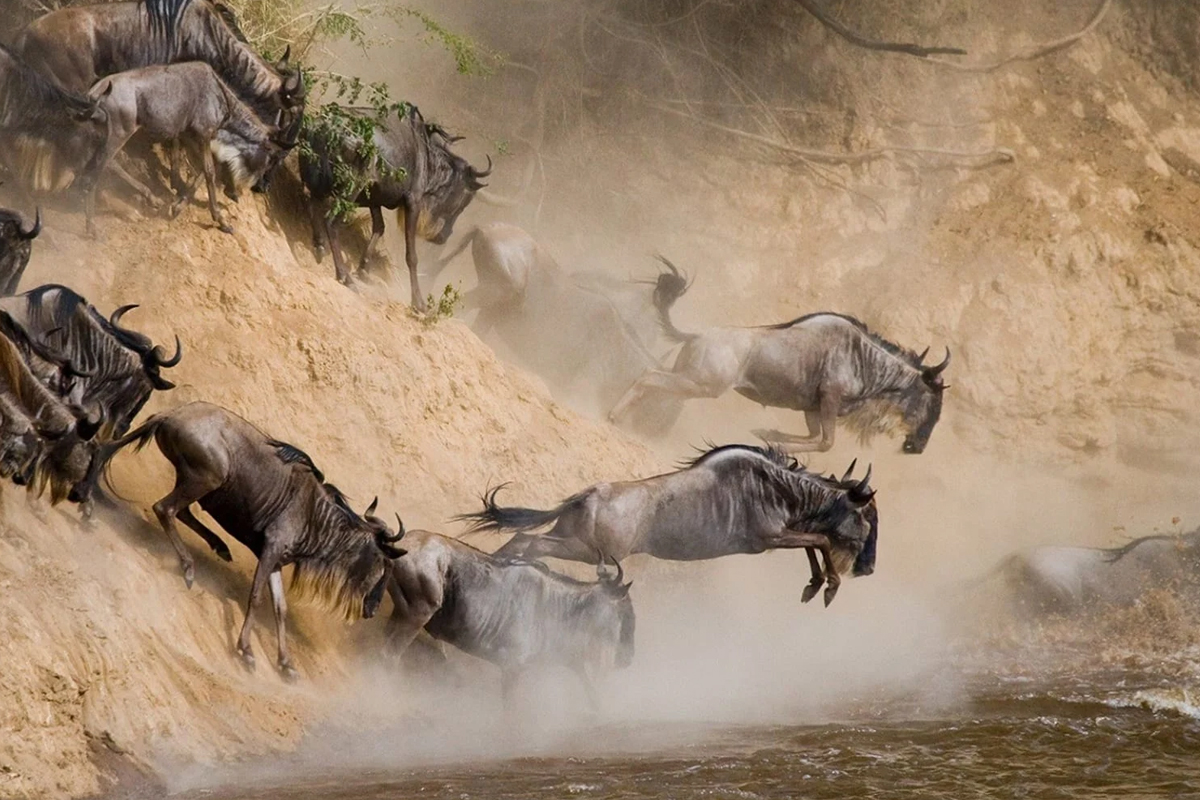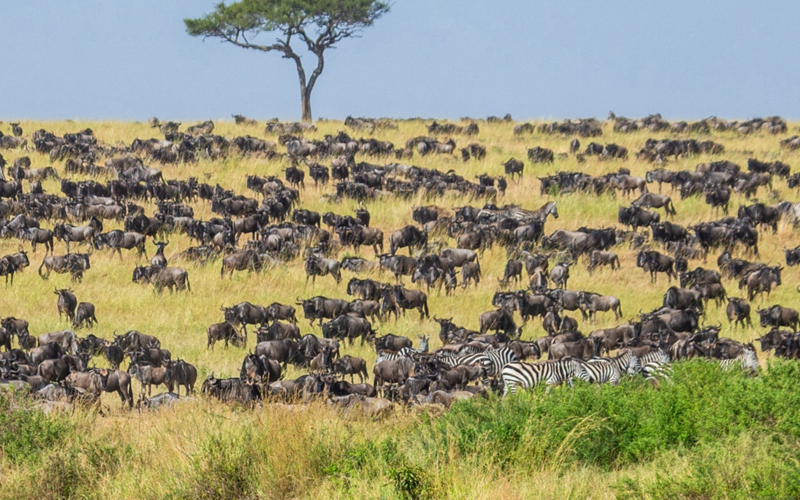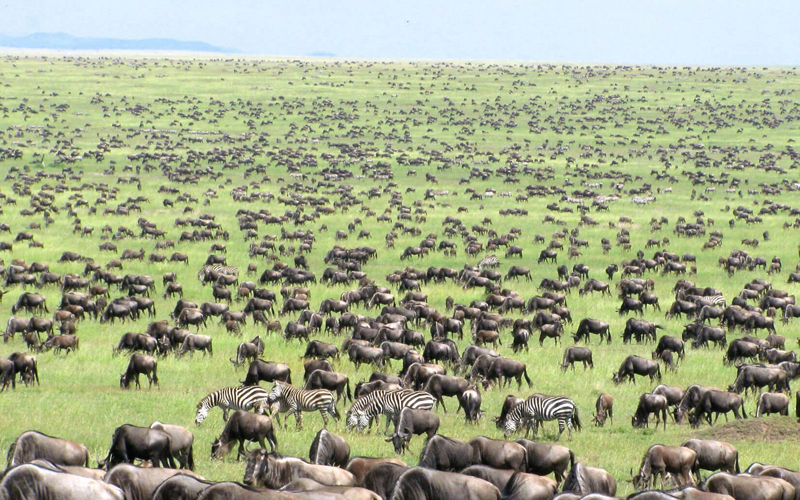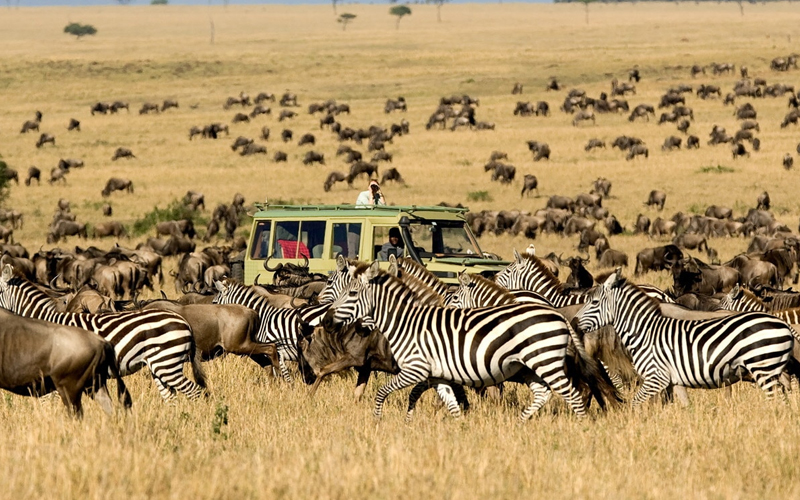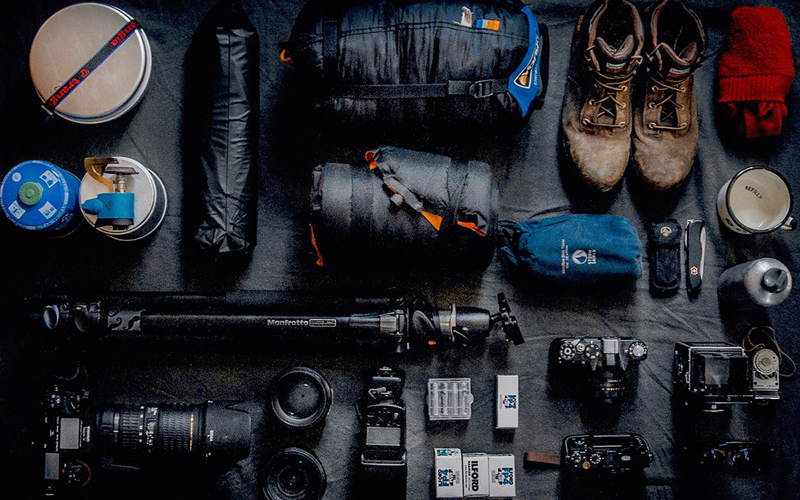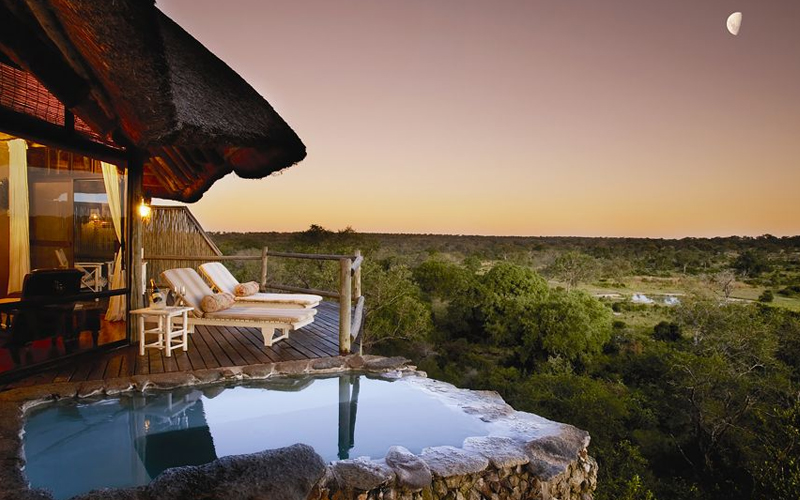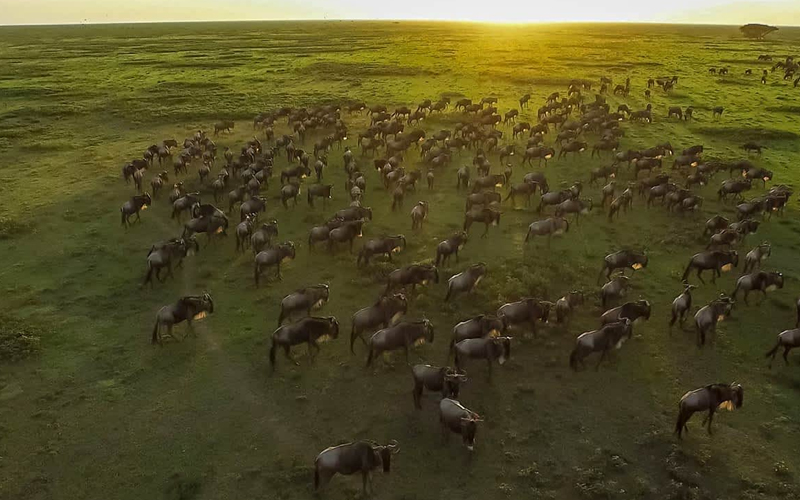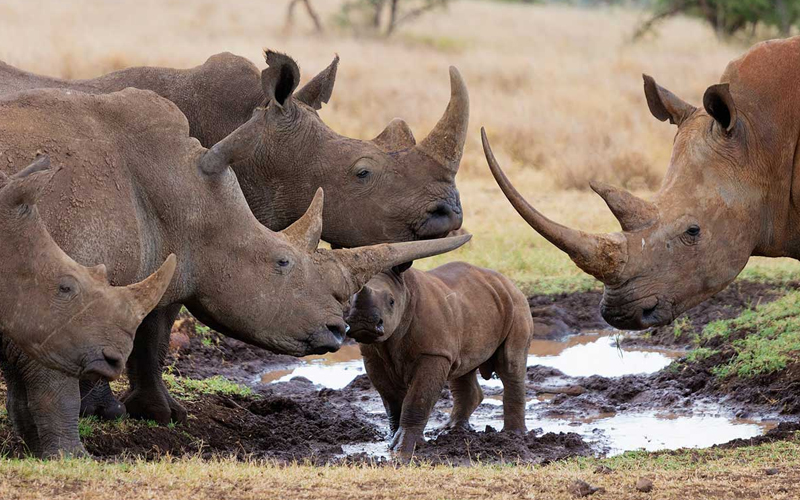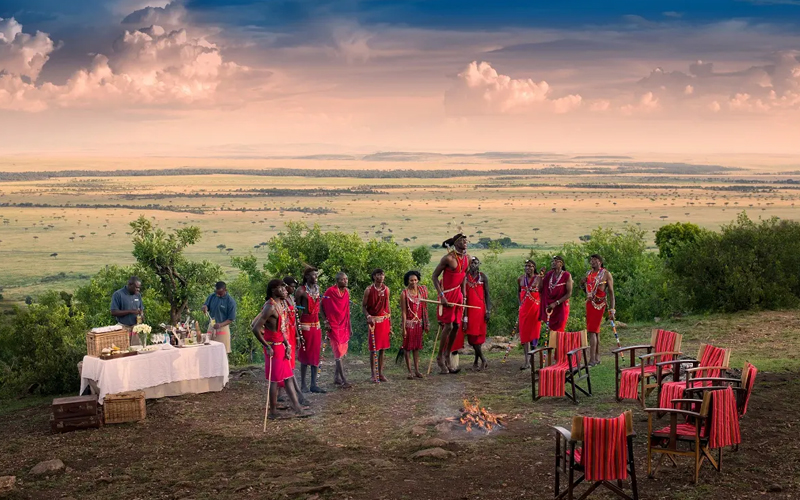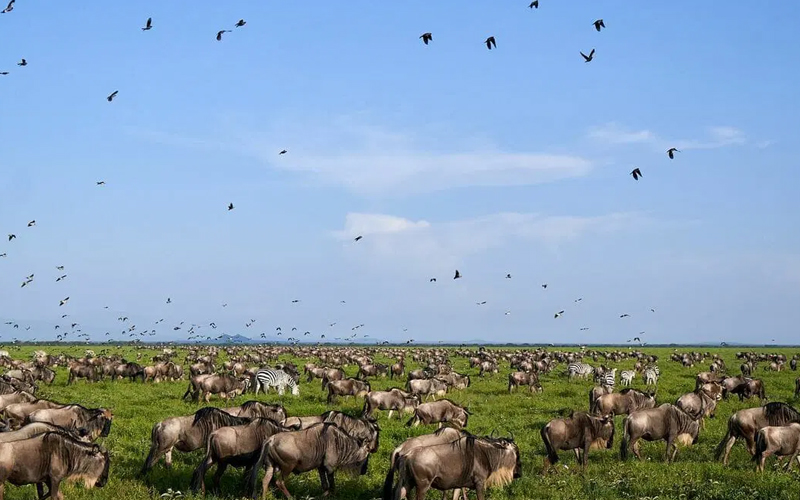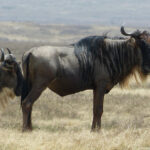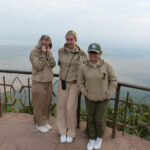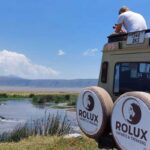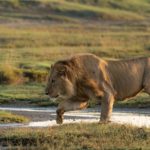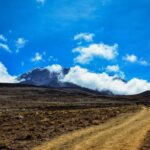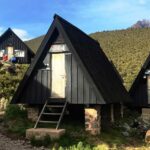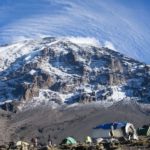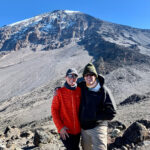Imagine witnessing millions of wildebeest thundering across the vast plains of Africa, driven by the timeless rhythm of nature. The Great Wildebeest Migration is not just a journey—it’s one of the most awe-inspiring spectacles on Earth. For wildlife enthusiasts and adventure seekers, a migration safari offers an unparalleled opportunity to experience this natural wonder up close.
Wildebeest Migration Safari
Understanding the Wildebeest Migration
Annual Cycle and Route
The Great Migration is a continuous cycle that sees over 1.5 million wildebeest, accompanied by hundreds of thousands of zebras and gazelles, travel a circuitous route across the Serengeti in Tanzania and the Maasai Mara in Kenya. This epic journey, spanning around 1,800 miles, is driven by the search for fresh grazing and water.
Key Locations: Serengeti and Maasai Mara
The Serengeti and the Maasai Mara are the main stages of this migration. The Serengeti, with its endless plains, is the starting point, where the herds gather during the calving season. The Maasai Mara, with its lush grasses, is a crucial destination, particularly during the dramatic river crossings.
Best Time to Witness the Migration
Seasonal Breakdown
- January to March: Calving season in the southern Serengeti, with thousands of calves born each day.
- April to June: The herds move northwards towards the central Serengeti.
- July to October: Spectacular river crossings at the Grumeti and Mara Rivers.
- November to December: The herds move back south to the Serengeti.
Peak Viewing Times
For the best viewing, consider visiting during the river crossings (July to October) or the calving season (January to March). These periods offer the most dramatic and captivating wildlife action.
Planning Your Safari
Choosing the Right Safari Operator
Selecting a reputable safari operator is crucial. Look for operators with experienced guides, good customer reviews, and a commitment to sustainable tourism. Operators offering tailored experiences can enhance your safari, ensuring you see the migration’s highlights.
Types of Safari: Guided Tours vs. Self-Drive
- Guided Tours: Ideal for first-timers and those wanting a stress-free experience. Guides provide expert knowledge and navigate the best viewing spots.
- Self-Drive: Offers flexibility and adventure for more experienced travelers. Ensure you have a reliable vehicle and a good understanding of the terrain.
Essential Safari Gear
Clothing and Footwear
Pack light, breathable clothing in neutral colors to blend with the environment. Include a hat, sunglasses, and a lightweight jacket for cooler mornings and evenings. Comfortable, sturdy footwear is essential for walking safaris and game drives.
Photography Equipment
Bring a good quality camera with a zoom lens (200mm or longer) for wildlife shots. A wide-angle lens is useful for capturing landscapes. Don’t forget extra batteries, memory cards, and a sturdy tripod.
Health and Safety Supplies
Carry insect repellent, sunscreen, and a basic first aid kit. Ensure you have the necessary vaccinations and medications for travel to East Africa.
Safari Accommodations
Lodges vs. Tented Camps
- Lodges: Offer more comfort and amenities, including en-suite bathrooms and dining facilities. Suitable for families and those seeking a more luxurious experience.
- Tented Camps: Provide a closer connection to nature, with the sounds of the wilderness right outside your tent. Options range from basic to luxury, catering to various budgets.
Recommendations for All Budgets
- Luxury: Singita Grumeti (Serengeti), Angama Mara (Maasai Mara)
- Mid-Range: Serengeti Sopa Lodge, Mara Serena Safari Lodge
- Budget: Kati Kati Tented Camp, Mara Explorers Camp
Highlights of the Migration Safari
Calving Season
From January to March, the southern Serengeti becomes a nursery. Witnessing thousands of calves being born and taking their first steps is a heartwarming and awe-inspiring experience.
Grumeti River Crossings
Around June to July, the herds face the first significant river crossing at the Grumeti River. The crossings are filled with drama as wildebeest navigate the treacherous waters teeming with crocodiles.
Mara River Crossings
The pinnacle of the migration occurs between July and October at the Mara River. This crossing is notorious for its high risk, with steep banks and powerful currents posing a deadly challenge to the herds.
Wildlife Beyond the Wildebeest
Big Five and Other Iconic Species
While the wildebeest migration is the main event, the Serengeti and Maasai Mara are also home to the Big Five: lions, elephants, leopards, rhinos, and buffalo. You’ll also see a plethora of other species, including zebras, giraffes, and gazelles.
Birds and Smaller Animals
Bird watchers will be delighted by the variety of avian species, from large raptors to colorful bee-eaters. Smaller mammals like warthogs, hyraxes, and various reptiles add to the rich biodiversity.
Cultural Experiences
Visiting Maasai Villages
A visit to a Maasai village offers a glimpse into the life of one of Africa’s most iconic tribes. Learn about their traditions, music, and crafts, and support their community by purchasing handmade souvenirs.
Local Cuisine and Traditions
Sample local dishes such as Nyama Choma (grilled meat) and Ugali (maize porridge). Participate in traditional dances and ceremonies to gain a deeper appreciation of the local culture.
Conservation and Ethical Tourism
Supporting Conservation Efforts
Your safari can support conservation efforts by choosing operators and lodges that invest in wildlife protection and community development. Conservation fees from park entries often fund critical projects.
Ethical Wildlife Viewing Practices
Practice responsible tourism by maintaining a respectful distance from wildlife, avoiding loud noises, and not littering. Follow your guide’s instructions to ensure your presence has minimal impact on the environment.
Embarking on a wildebeest migration safari is more than just a journey—it’s a life-changing adventure. From the dramatic river crossings to the tender moments of calving season, every aspect of the migration offers a profound connection to the natural world. By planning carefully, packing appropriately, and supporting ethical tourism, you can ensure that your safari is an unforgettable experience that also contributes to the preservation of this incredible ecosystem.
FAQs
What is the best time of year for a wildebeest migration safari?
The best times to witness the migration are during the calving season (January to March) in the southern Serengeti and the river crossings (July to October) at the Grumeti and Mara Rivers.
How long should my safari be to see the migration?
A safari of at least 7-10 days is recommended to maximize your chances of witnessing key migration events and to explore different regions of the Serengeti and Maasai Mara.
Are there safaris that focus on the Great Migration?
Yes, many safari operators offer specialized migration safaris that follow the herds and provide optimal viewing opportunities for key migration events.
What should I pack for a migration safari?
Pack light, breathable clothing in neutral colors, a good quality camera with a zoom lens, health and safety supplies, and comfortable footwear. Don’t forget essentials like insect repellent and sunscreen.
How can I ensure my safari is environmentally friendly?
Choose eco-friendly lodges and operators, practice ethical wildlife viewing, and support conservation efforts through donations or participation in sustainable tourism initiatives.
Embark on an unforgettable journey through Tanzania’s breathtaking landscapes and wildlife wonders. Immerse yourself in the iconic Serengeti, where the awe-inspiring wildlife migration unfolds before your eyes. Marvel at the abundant biodiversity of the breathtaking Ngorongoro Crater. Don’t miss the exhilarating hike up Kilimanjaro, Africa’s highest peak, for an unparalleled adventure. Then, unwind with a serene beach retreat in Zanzibar. Join us for the ultimate Tanzania Safari tour!

